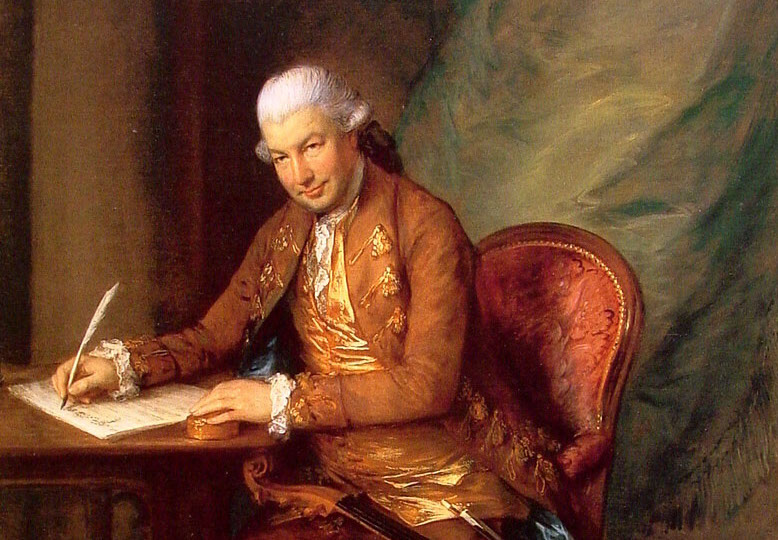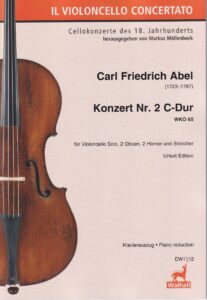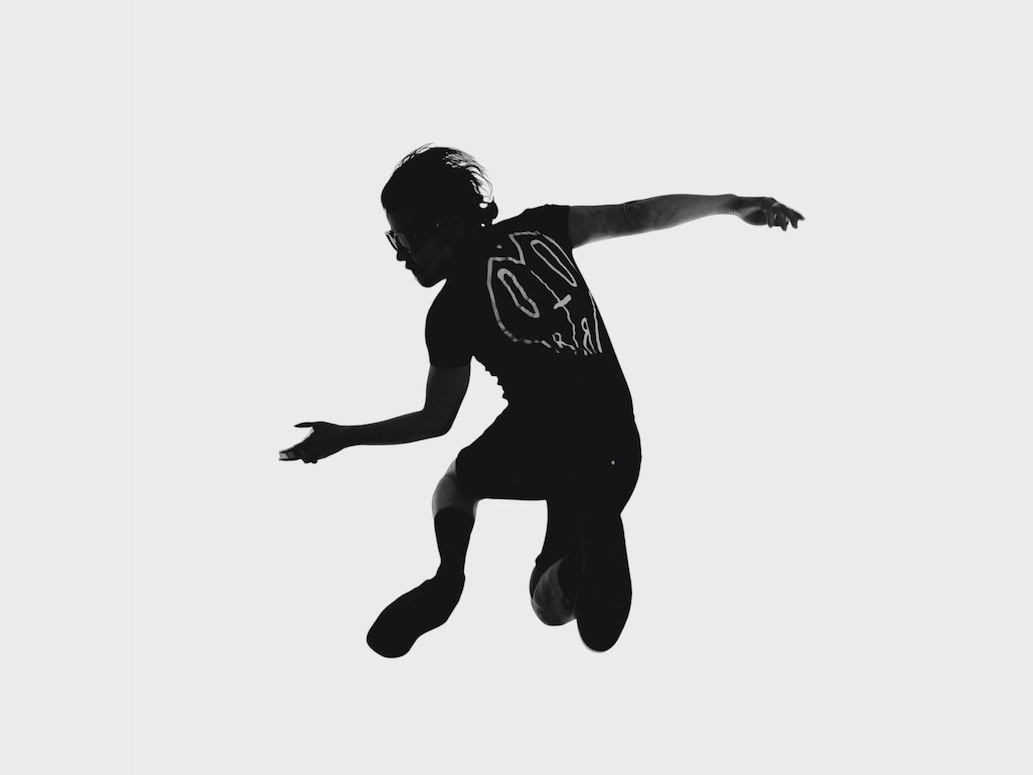Important first edition for cello
The second concerto by Carl Friedrich Abel is a valuable addition to the classical cello repertoire, on a par with the works of C. P. E. Bach, Haydn or Boccherini.

The composer Carl Friedrich Abel was born in Köthen 300 years ago (died in London in 1787). His father was a violinist and gambist. The latter instrument was decisive for his son's career. After an engagement at the Dresden court, Abel's circumstances from 1755 onwards are unclear. He probably left Saxony due to the turmoil of the Seven Years' War and made his way to London via France, where he enjoyed great success as a viola da gamba virtuoso from 1759. Together with Johann Sebastian Bach's youngest son, Johann Christian, he founded the successful Bach Abel Concerts. In 1782, he spent an extended period at the royal court in Potsdam. Crown Prince Frederick William, the nephew of Frederick the Great, was, like his uncle, an enthusiastic music lover, played the cello himself and was a pupil of Jean-Pierre Duport, among others. Wolfgang Amadeus Mozart composed the Prussian String Quartets K. 575, 589 and 590 for him.
Abel probably wrote the three-movement, approximately 20-minute Cello Concerto No. 2 in C major, composed in 1782, for Friedrich Wilhelm. However, there is no evidence of a performance by him. With two oboes, two horns and strings, the orchestration corresponds entirely to the classical model. The first movement (Allegro maestoso) is the most conventional in terms of its structure (sonata form). In contrast, the second and third movements offer surprises: in the Adagio ma non troppo (F major), the composer achieves an astonishing sound effect with the solo use of the horns. Two different versions of the third movement have survived. An Allegro in 6/8 time was replaced by a Rondeau - Tempo di Minuetto. This was possibly due to the somewhat conservative taste at the Berlin court. In addition, two of Abel's original cadenzas have been preserved in manuscript.
Abel's second cello concerto is in no way inferior to the better-known works by Carl Philipp Emanuel Bach, Joseph Haydn or Luigi Boccherini and can be regarded as a significant enrichment of the classical cello literature. With a range from C to g2, Abel skillfully exploits the possibilities of the instrument and offers the performers a rich palette of virtuoso and lyrical expression.
Bruno Delepelaire, principal cellist of the Berliner Philharmoniker, has masterfully recorded this work with the Berlin Baroque Soloists on the Hänssler classic label. It is very pleasing that both versions of the third movement can be heard. The sheet music edition by Markus Möllenbeck contains a detailed preface on the history of the concerto's composition as well as practical performance notes. The piano reduction was written by Ulrich Lüdering.
 Carl Friedrich Abel: Cello Concerto No. 2 in C major, WKO 60, edited by Markus Möllenbeck, piano reduction, EW1112, € 24.80, Edition Walhall, Magdeburg
Carl Friedrich Abel: Cello Concerto No. 2 in C major, WKO 60, edited by Markus Möllenbeck, piano reduction, EW1112, € 24.80, Edition Walhall, Magdeburg








